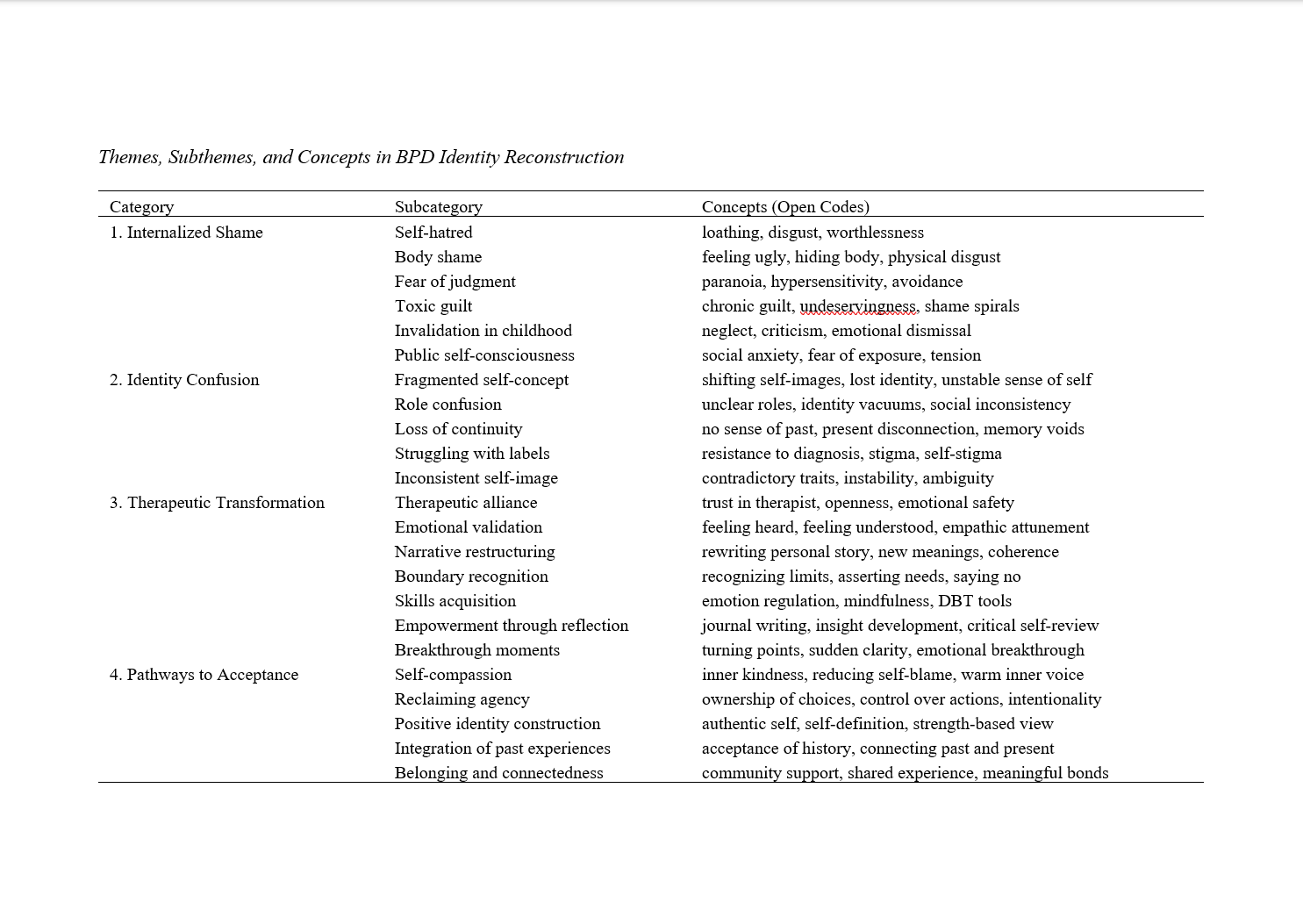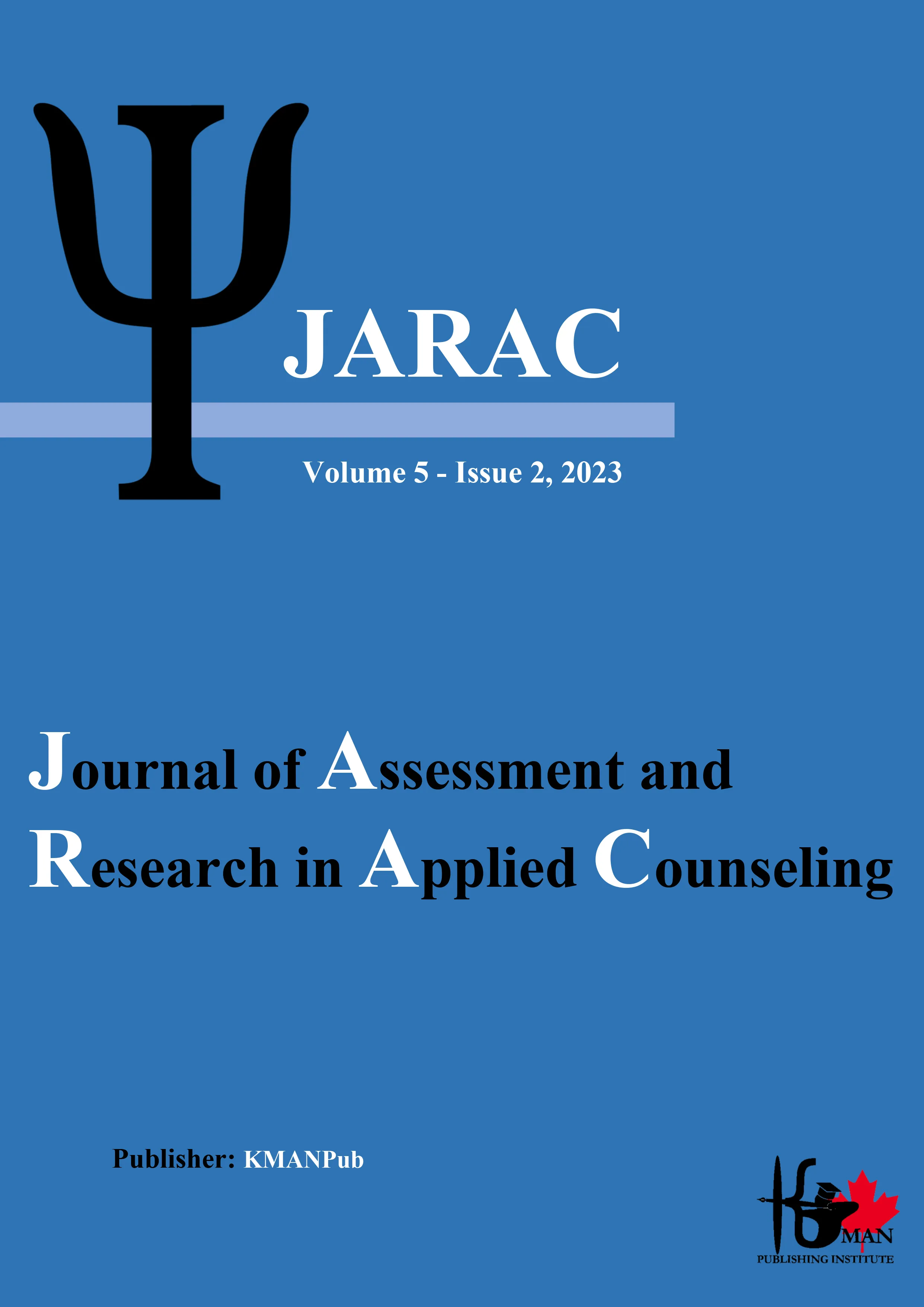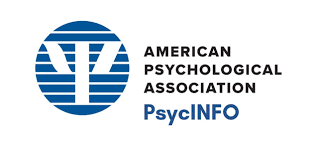From Shame to Acceptance: Identity Reconstruction in Clients with Borderline Personality Disorder
Keywords:
Borderline Personality Disorder, Identity Reconstruction, Shame, Self-Acceptance, Narrative Therapy, Emotional Validation, Therapeutic Alliance, Self-CompassionAbstract
Objective: This study aims to explore the process of identity reconstruction from shame to self-acceptance in individuals diagnosed with Borderline Personality Disorder (BPD).
Methods and Materials: A qualitative research design was employed, involving semi-structured interviews with 24 participants diagnosed with BPD, all residing in Bulgaria. Data collection focused on exploring the participants' lived experiences of shame, identity disturbance, and their therapeutic journey toward self-acceptance. Thematic analysis was used to analyze the data, with NVivo software supporting the coding process. Theoretical saturation was reached, ensuring comprehensive representation of the themes.
Findings: The analysis revealed four main themes: Internalized Shame, Identity Confusion, Therapeutic Transformation, and Pathways to Acceptance. Participants described pervasive feelings of shame rooted in childhood trauma, leading to identity fragmentation and relational instability. The therapeutic alliance, emotional validation, and narrative restructuring emerged as key processes in identity reconstruction. Participants reported a gradual shift from self-criticism to self-compassion, facilitated by therapy, which helped in the integration of their past and present selves. Despite setbacks, participants experienced significant improvements in self-worth and emotional regulation.
Conclusion: This study highlights the crucial role of shame in the development of identity disturbance in BPD. The therapeutic process, characterized by a strong therapeutic alliance and self-compassion, is integral to the reconstruction of identity from shame to acceptance. Future research should focus on comparative studies of therapeutic approaches and explore the long-term impact of therapy on identity consolidation in BPD.
Downloads
References
Bekboeva, A. K. (2021). The Role of the Media in the Formation of Shame in the National Consciousness. Social Naja Politika I Social Noe Partnerstvo (Social Policy and Social Partnership)(7). https://doi.org/10.33920/pol-01-2107-08
Békés, V., Szabó, D., Lévay, E. E., Salgó, E., & Unoka, Z. (2023). Moral Injury and Shame Mediate the Relationship Between Childhood Trauma and Borderline Personality Disorder, PTSD, and Complex PTSD Symptoms in Psychiatric Inpatients. Journal of personality disorders, 37(4), 406-423. https://doi.org/10.1521/pedi.2023.37.4.406
Bogaerts, A., Claes, L., Raymaekers, K., Buelens, T., Bastiaens, T., & Luyckx, K. (2023). Trajectories of Adaptive and Disturbed Identity Dimensions in Adolescence: Developmental Associations With Self-Esteem, Resilience, Symptoms of Depression, and Borderline Personality Disorder Features. Frontiers in Psychiatry, 14. https://doi.org/10.3389/fpsyt.2023.1125812
Bois, C., Fazakas, I., Salles, J., & Gozé, T. (2022). Personal Identity and Narrativity in Borderline Personality Disorder: A Phenomenological Reconfiguration. Psychopathology, 56(3), 183-193. https://doi.org/10.1159/000526222
Bynum, W. E., Jackson, J. A., Varpio, L., & Teunissen, P. W. (2023). Shame at the Gates of Medicine: A Hermeneutic Exploration of Premedical Students’ Experiences of Shame. Academic Medicine, 98(6), 709-716. https://doi.org/10.1097/acm.0000000000005152
Cameron, A., Benz, M. B., & Reed, K. M. P. (2021). The Role of Guilt and Shame in Psychosocial Functioning in a Sample of Women With Borderline Personality Disorder. The Journal of Nervous and Mental Disease, 209(1), 13-16. https://doi.org/10.1097/nmd.0000000000001246
Duică, L., Antonescu, E., Totan, M., Boţa, G., & Silişteanu, S. C. (2022). Borderline Personality Disorder “Discouraged Type”: A Case Report. Medicina, 58(2), 162. https://doi.org/10.3390/medicina58020162
Faggioli, I., Esposito, C. M., & Stanghellini, G. (2024). Identity and Temporal Fragmentation in Borderline Personality Disorder: A Systematic Review. Brain Sciences, 14(12), 1221. https://doi.org/10.3390/brainsci14121221
Feichtinger, K., Laczkovics, C., Alexopoulos, J., Gruber, M., Klauser, M., Parth, K., Wininger, A., Ossege, M., Baumgärtner, J., Doering, S., & Blüml, V. (2024). Personality Functioning in Bipolar 1 Disorder and Borderline Personality Disorder. BMC psychiatry, 24(1). https://doi.org/10.1186/s12888-024-06297-8
Gertzen, M., Karcher, S., Schwarz, J., Rosenberger, C., Strasburger, M., Rabenstein, A., Strasser, A.-M., Palm, U., & Rüther, T. (2024). “I Can’t Get No Satisfaction”—Psychosocial Aspects and Awareness of Negative Impacts in Chemsex Users: Results From an Anonymous Online Survey. Brain Sciences, 14(7), 666. https://doi.org/10.3390/brainsci14070666
Goldbach, R. E., Neukel, C., Panizza, A., Reinken, A., & Krause-Utz, A. (2023). Differentiating Between Intrapsychic Symptoms and Behavioral Expressions of Borderline Personality Disorder in Relation to Childhood Emotional Maltreatment and Emotion Dysregulation: An Exploratory Investigation. European Journal of Psychotraumatology, 14(2). https://doi.org/10.1080/20008066.2023.2263317
Jørgensen, C. R., & Bøye, R. (2024). “I Am Ashamed That I Exist. I Feel Like Apologizing for Existing”: The Phenomenology of Shame in Patients With Borderline Personality Disorder: A Qualitative Study. Personality Disorders Theory Research and Treatment, 15(3), 181-192. https://doi.org/10.1037/per0000655
Lusk, P. (2023). Anticipated Shame and Professional Identity Formation. Communication & Medicine, 18(3), 272-283. https://doi.org/10.1558/cam.21481
Martin, J., Tarantino, D. M., & Levy, K. N. (2023). Investigating Gender-Based Differential Item Functioning on the McLean Screening Instrument for Borderline Personality Disorder (MSI-BPD): An Item Response Theory Analysis. Psychological assessment, 35(5), 462-468. https://doi.org/10.1037/pas0001229
Meade, M. R., & Lund, E. M. (2024). The Impact of Ableist Microaggressions on Identity Formation Among Adults With Disabilities. Rehabilitation Counselors and Educators Journal, 13(2). https://doi.org/10.52017/001c.123807
Mohana, & Moon, C. (2024). Towards Understanding the Direct and Indirect Effects of Borderline Personality Features on Identity Disturbance. Mental Health Science, 2(2). https://doi.org/10.1002/mhs2.60
Mungo, A., Delhaye, M., Blondiau, C., & Hein, M. (2024). Identity Formation in Individuals Between 16 and 25 Years Old With Borderline Personality Disorder. Journal of clinical medicine, 13(11), 3221. https://doi.org/10.3390/jcm13113221
Papathanasiou, C. (2022). The Sociology of Emotions in the Psychiatric Practice: How Residents in Psychiatry Learn to Dislike Patients With Borderline Personality Disorder. Sociology International Journal, 6(5), 301-308. https://doi.org/10.15406/sij.2022.06.00303
Williams-Forson, P. (2022). When Racism Rests on Your Plate, Indeed, Worry About Yourself. 191-204. https://doi.org/10.5149/northcarolina/9781469668451.003.0006
Wojciechowski, T. (2021). The Dual Mediating Roles of Impulsivity and Emotion Regulation of the Borderline Personality Disorder‐violence Relationship: A Structural Equation Modeling Approach. Journal of Forensic Sciences, 66(6), 2329-2339. https://doi.org/10.1111/1556-4029.14807
Yuan, Y., Lee, H., Newhill, C. E., Eack, S. M., Fusco, R. A., & Scott, L. N. (2022). Differential Associations Between Trauma Types and Borderline Personality Disorder From the Perspective of Emotion Dysregulation. https://doi.org/10.21203/rs.3.rs-2235871/v1
Yuan, Y., Lee, H., Newhill, C. E., Eack, S. M., Fusco, R. A., & Scott, L. N. (2023). Differential Associations Between Childhood Maltreatment Types and Borderline Personality Disorder From the Perspective of Emotion Dysregulation. Borderline personality disorder and emotion dysregulation, 10(1). https://doi.org/10.1186/s40479-023-00210-7

Downloads
Additional Files
Published
Submitted
Revised
Accepted
Issue
Section
License

This work is licensed under a Creative Commons Attribution-NonCommercial 4.0 International License.














